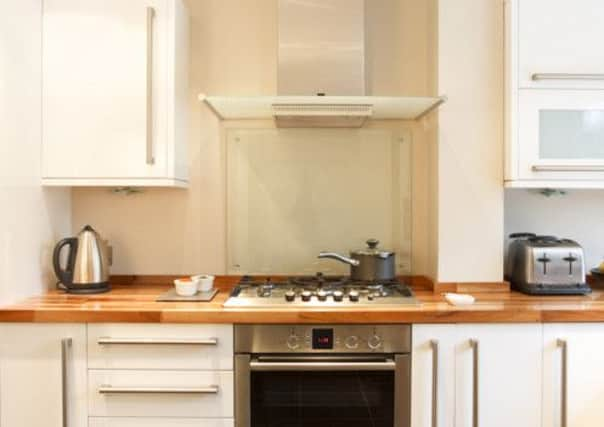A splash of colour


Splashbacks for hobs or cookers are typically made of stainless steel, tiles or heatproof glass, while splashbacks for kitchen sinks and bathroom basins are usually tiled, but can be glass. The problem with tiles is that grout can become discoloured over time, so using dark grout makes sense in the kitchen, especially in the cooking area.
Glass splashbacks are available in standard sizes for hobs and cookers, but bespoke sizes can be made to order by specialist companies. Glass comes in such a large range of colours and patterns, it’s easy to find something to suit your taste. If you want to inject a limited amount of colour or pattern into the room, a glass splashback is a good way to do it, or you can co-ordinate the colour of the splashback with the walls.
Advertisement
Hide AdAdvertisement
Hide AdSplashbacks can also be matched to a glass upstand, which protects the walls above the rest of the kitchen worktop. Upstands often have to be made-to-measure to ensure the length is correct and the cut-outs for the sockets, if any, are in the right places.
If you want to create a unique splashback, how about using wallpaper? OK, y ou may think wallpaper’s not suitable for kitchens and bathrooms, but vinyl ones are designed specially for these rooms. Conventional wallpaper can often be used too - the important thing is to protect it with a clear glass panel, such as the good value Laminate Glass Clear Splashback (£40, B&Q), or a clear acrylic panel away from the hob or cooker. Provided they’re fitted and sealed properly, these panels work well because the wallpaper’s sealed in, so moisture, cooking splashes, dust and dirt can’t get to it.